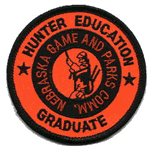Nebraska Game and Parks Commission
Document Type
Article
Date of this Version
2000
Abstract
We assessed the precision of visual estimates of vegetation and substrate along transects in 15 shallow, natural Nebraska lakes. Vegetation type (submergent or emergent), vegetation density (sparse, moderate, or dense), and substrate composition (percentage sand, muck, and clay; to the nearest 10%) were estimated at 25–70 sampling sites per lake by two independent observers. Observer agreement for vegetation type was 92%. Agreement ranged from 62.5% to 90.1% for substrate composition. Agreement was also high (72%) for vegetation density estimates. The relatively high agreement between estimates was likely attributable to the homogeneity of the lake habitats. Nearly 90% of the substrate sites were classified as 0% clay, and over 68% as either 0% or 100% sand. When habitats were homogeneous, less than 40 sampling sites per lake were required for 95% confidence that habitat composition was within 10% of the true mean, and over 100 sites were required when habitats were heterogeneous. Our results suggest that relatively high precision is attainable for vegetation and substrate mapping in shallow, natural lakes.


Comments
Published in North American Journal of Fisheries Management 22:1329–1333, 2002 Copyright by the American Fisheries Society 2002